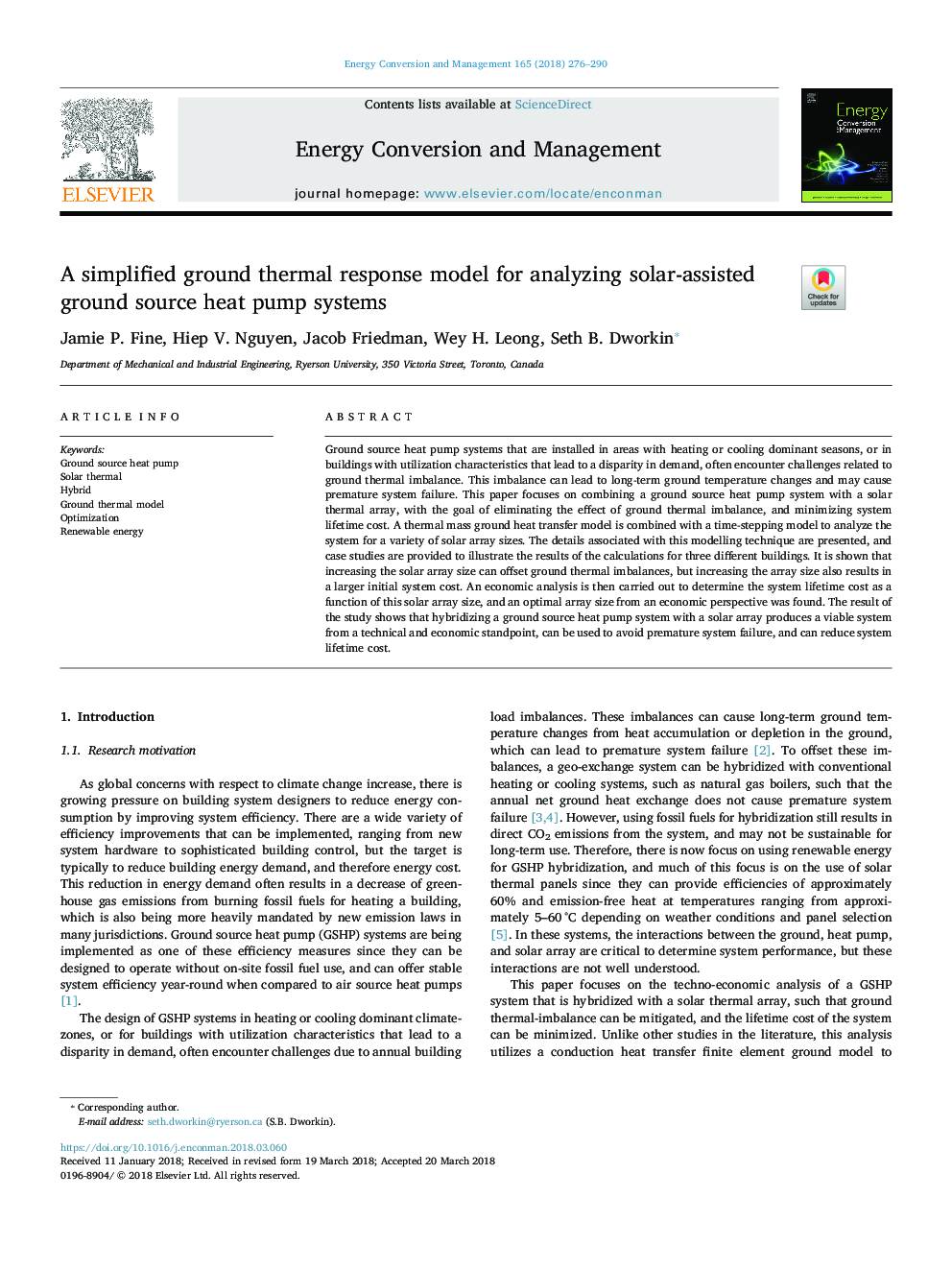| Article ID | Journal | Published Year | Pages | File Type |
|---|---|---|---|---|
| 7158551 | Energy Conversion and Management | 2018 | 15 Pages |
Abstract
Ground source heat pump systems that are installed in areas with heating or cooling dominant seasons, or in buildings with utilization characteristics that lead to a disparity in demand, often encounter challenges related to ground thermal imbalance. This imbalance can lead to long-term ground temperature changes and may cause premature system failure. This paper focuses on combining a ground source heat pump system with a solar thermal array, with the goal of eliminating the effect of ground thermal imbalance, and minimizing system lifetime cost. A thermal mass ground heat transfer model is combined with a time-stepping model to analyze the system for a variety of solar array sizes. The details associated with this modelling technique are presented, and case studies are provided to illustrate the results of the calculations for three different buildings. It is shown that increasing the solar array size can offset ground thermal imbalances, but increasing the array size also results in a larger initial system cost. An economic analysis is then carried out to determine the system lifetime cost as a function of this solar array size, and an optimal array size from an economic perspective was found. The result of the study shows that hybridizing a ground source heat pump system with a solar array produces a viable system from a technical and economic standpoint, can be used to avoid premature system failure, and can reduce system lifetime cost.
Related Topics
Physical Sciences and Engineering
Energy
Energy (General)
Authors
Jamie P. Fine, Hiep V. Nguyen, Jacob Friedman, Wey H. Leong, Seth B. Dworkin,
